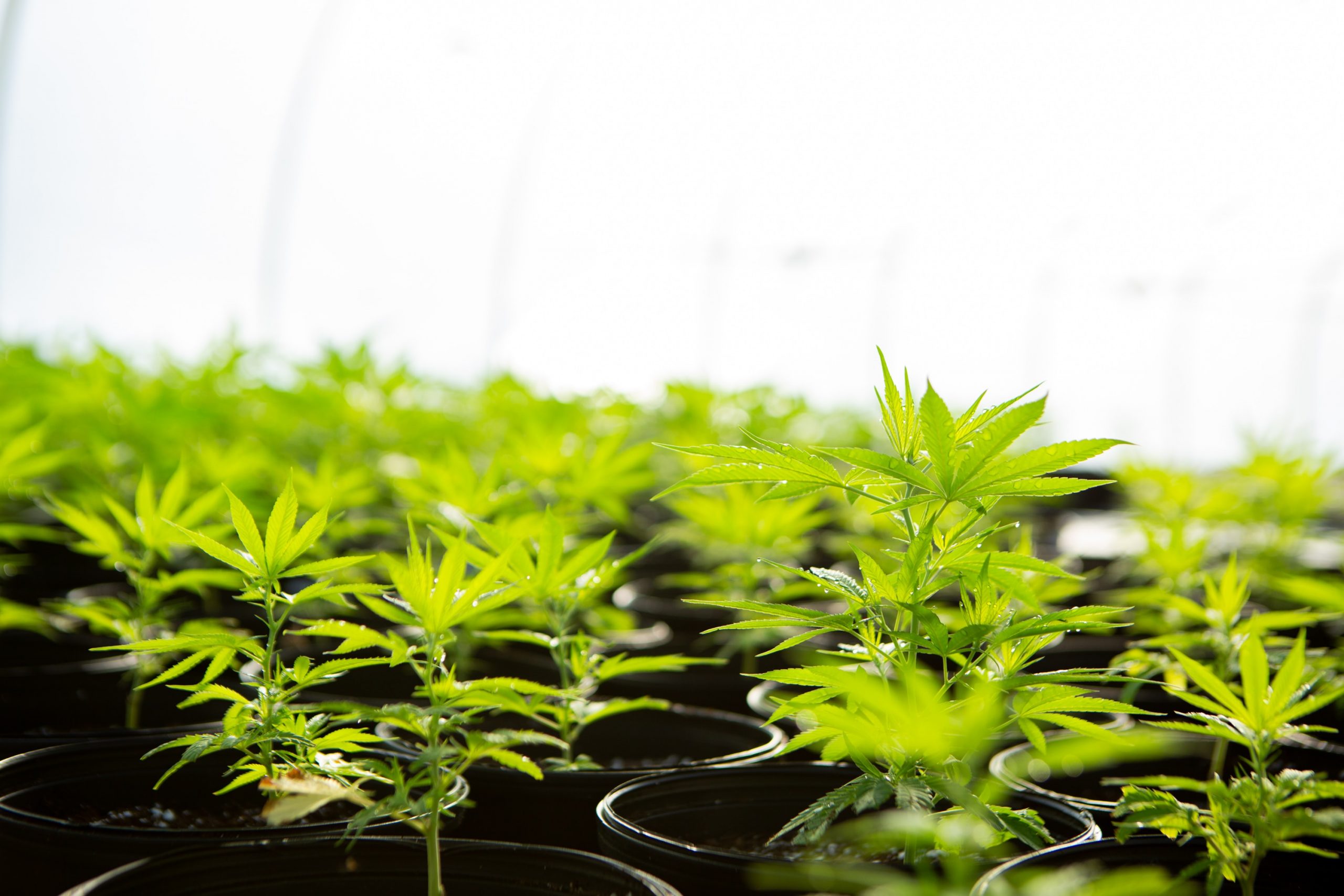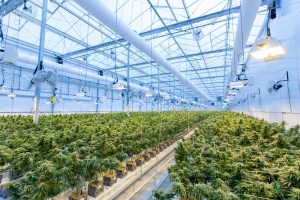
The easy, and technically true, answer is “no.” But, since this is cannabis law, there’s also room for maybe. This is a great question because even though a lot of cannabis is grown in high-tech greenhouses by technicians in lab coats and is regulated like nuclear waste, let us not forget that this is just a plant that grows quite well at your local farm or in your backyard garden. It seems like cannabis could, and should, be organic, right?

What Does “Organic” Mean?
Organic is often used as a synonym for adjectives like green, natural, healthy, not-made-in-a-laboratory and not-covered-in-nasty-chemicals. But what we are talking about here is the kind of organic you find on food labels in the grocery store: USDA Certified Organic.
The U.S. Department of Agriculture (USDA) sets very specific rules to determine what plant and food products can be labeled organic. The label certifies how the land has been used historically, and what methods are used to produce the plants. It means that only certain chemicals or pesticides can be used in growing the crop. The federal government sets all of the rules for organic certification.
At this point you may see the problem: the federal government decides what is and is not organic. And the federal government still insists that cannabis is illegal. Do not expect the USDA to be handing out organic certifications for something that you cannot legally grow, own, or sell.
(On a side note, with the federal legalization of hemp, we are now starting to see USDA certified organic hemp products, but that’s a story for another day.)
Determining what chemicals and pesticides are okay to use on a particular plant is not simple. We must look at how the plant will be used by people. Cannabis is extra complicated because of the many ways it can be consumed: from smoking the raw flower, to cooking it, or making extracts, concentrates (using various solvents or solventless), topicals or ingestibles (eating, drinking, tinctures, etc.). Different methods of consumption can make a big difference with pesticide safety. For example, a chemical that is safe to eat might be dangerous to burn and inhale.

 Does the Government Regulate What Chemicals and Pesticides can be Used on Cannabis?
Does the Government Regulate What Chemicals and Pesticides can be Used on Cannabis?
The federal government does not; it can currently only tell you not to grow or possess cannabis. So that leaves everything up to state governments (which typically let the feds do the heavy lifting of pesticide testing and regulation). Since every legalized state currently exists in its own isolated regulatory bubble, it shouldn’t be surprising that there are significant differences between state cannabis policies and guidelines.
The bud you buy in Oregon can have different pesticides applied to it than the flower in Massachusetts. Let’s take a quick look at the differences:
Massachusetts is very strict. The commonwealth takes the position that it will only approve pesticide uses that the EPA has approved (which is zero for cannabis). Massachusetts’ official policy says:
“Currently, EPA does not allow the use of a registered pesticide on marijuana or hemp. The Department is not aware of any registered pesticide that has a label that would allow for use on marijuana or hemp under either federal law or M.G.L. c. 132B. Because of this, the use of pesticides on marijuana or hemp is prohibited in Massachusetts.”
(Note that Massachusetts, like other states, does permit the use of 25(b), or minimum risk, pesticides. These substances are considered to present such minimal risk to human health and the environment that they do not require EPA registration.)
 Colorado has taken a different approach and has instead developed a list of hundreds of approved pesticides for use based on “broad label statements that do not prohibit use on cannabis,” and “the product’s active ingredient is exempted from the requirement of a tolerance.” If a pesticide is exempted from a tolerance, then it is considered safe enough that the EPA does not have to set maximum limits on how much can be used. Colorado prohibits pesticides that are not approved for use on tobacco, to address the smoking issue.
Colorado has taken a different approach and has instead developed a list of hundreds of approved pesticides for use based on “broad label statements that do not prohibit use on cannabis,” and “the product’s active ingredient is exempted from the requirement of a tolerance.” If a pesticide is exempted from a tolerance, then it is considered safe enough that the EPA does not have to set maximum limits on how much can be used. Colorado prohibits pesticides that are not approved for use on tobacco, to address the smoking issue.
California uses yet another method. Instead of publishing and updating a list of approved pesticides, California sets out the rules (which are essentially the same as Colorado’s standards) and publishes a short (and incomplete) list of prohibited pesticides. It is then left up to the cultivator to make sure their favorite pesticide doesn’t violate state regulations.
Oregon maintains a list of approved pesticides which must be (1) exempt from a tolerance by the EPA, (2) intended for unspecified food crops, and (3) passed a pyrolysis test (i.e. it’s okay to burn it).
Washington uses similar criteria for its list of approved chemicals, but that state does have some additional categories for uses prior to planting and post-harvest.
Nevada has published a relatively short list (a little more than one-tenth the size of Colorado, California, and Washington) of approved pesticides.
Alaska employs essentially the same criteria as Colorado and Oregon, but the list only has about one-fourth of the number of approved pesticides.
How Do I Know What’s on My Weed if Every State has Different Rules and Different Approved Pesticides?
Attempting to fill the regulatory holes and inconsistencies, various third-party organizations have stepped up and are trying to create labels and certifications that can take the place of “organic.”
Depending on where you live, you may have seen labels like Biodynamic, Regenerative, Demeter, Dragonfly Earth Medicine, Certified Kind, Clean Cannabis, Clean Green, and more. Many growers and advocates are pushing for cultivation techniques that go beyond the requirements of organic and encompass more expansive standards of personal and environmental health and sustainability. These designations are applied within the context of state regulations that may not be explained on the label of your pre-roll, which makes them non-intuitive.
The result is that, despite the unavailability of the official certified organic label, there is a lot of cannabis out there that’s being grown by standards that would meet and exceed organic requirements. But at the present moment, without consistent laws and labeling, the burden falls on the consumer to find out how the weed in your local dispensary was actually grown.
***
Do you have a question about cannabis and the law? Ask us!
Disclaimer: The information in this column is not legal advice, is not a substitute for the advice of a licensed attorney in your jurisdiction, should not be relied upon as such, and does not create an attorney-client relationship with anybody.
By Kyle Sosebee
Kyle Sosebee is an attorney in Western Massachusetts. sosebee@sosebeelaw.com; www.sosebeelaw.com; @uprootlegal




Leave a Reply